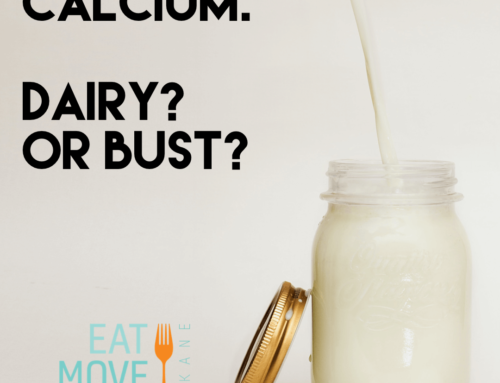
Photo sourced from The Cleveland Clinic
By Abigail Barth, Bastyr University Dietetic Intern and Reviewed by Monika Jacobson, RDN
It’s February and that means it’s American Heart Month and, no, we’re not talking about Valentine’s Day. This February we’re talking about heart health. As a Dietitian this topic is an exciting one to talk about because your diet and lifestyles largely affect your heart health. So, let’s pause and take a moment to talk about what heart health is exactly.
When talking about heart health, we’re talking about all the things you do in a day that impact how easily your heart can do its job. Some key functions of your heart include pumping nutrient-rich blood throughout your body, supplying oxygen to your cells, and aiding in removing toxins and waste from your bloodstream. It’s easy to see that your heart plays a major role in keeping you healthy. Let’s talk about some key factors to consider if you want to support your heart health.
Understanding your risk for cardiovascular disease
Cardiovascular disease, or heart disease, is an umbrella term that covers a variety of heart-related issues that affect your heart or blood vessels. Some of the more common heart-related issues include high blood pressure, high cholesterol, coronary artery disease (clogged arteries), heart attack, and stroke.
For women, it’s also important to understand that symptoms and risk factors for heart disease differ from men. Women are less likely than men to experience the typical extreme chest pain during a heart attack. Instead, they may experience heart attack symptoms that are less obvious, including dizziness, unusual tiredness or fatigue, nausea, pressure or tightness in the chest, and stomach pain.
These symptoms are important for women to understand and look out for so you can better understand the less obvious and dangerous signs of heart disease. Women’s heart attack symptoms differ from men primarily because of the hormone changes we experience as we go through menopause.
Women have higher levels of estrogen, which is heart protective. You can think of estrogen as this magical heart-protective hormone because it helps regulate healthy cholesterol levels and it keeps blood vessels flexible and helps them relax. Both of these benefits help maintain healthy blood pressure. Unfortunately, as women age and go through menopause, estrogen levels drop significantly, which in turn diminishes the heart-protective benefits we receive from estrogen. So, what can you do to help support your heart health? Learn more about women and heart health in menopause here.

Eat a healthy diet
The foods you eat play a big role in preventing heart disease. Making sure your meals and snacks provide you with fruits, vegetables and whole grains is key to eating with your heart health in mind (3-Day Anti-inflammatory Diet Meal Plans from Eat Move Thrive are a perfect way to get started eating a heart healthy diet). These foods are rich in vitamins, mineral, and fiber and are naturally low in calories. Focusing on these foods can help direct your meal and snack choices in the right direction. Another part of eating for a healthy heart includes limiting salt and unhealthy fats such as saturated and trans fats and including healthier protein options. When talking about salt, we’re not just talking about the saltshaker on your table. Salt can be hidden in all sorts of processed
foods and eating too much of these foods causes your body to hold onto extra water, which in turn raises your blood pressure. Instead of reaching for those afternoon chips try snacking on vegetables and hummus or some fruit with a peanut butter yogurt dip. These snack options are naturally low in salt and will keep you feeling satisfied until your next meal.
Another important aspect of nutrition and heart health to understand is that saturated and trans fats increase your blood cholesterol levels. Overtime, high blood cholesterol can lead to plaque buildup in your arteries, known as atherosclerosis (clogged arteries) and can increase your risk
for coronary artery disease and stroke. These unhealthy fats are primarily found in animal products, fried foods, and processed foods. You can limit the amount of unhealthy fats you eat by choosing reduced-fat or low-fat dairy products and selecting lean meat options like skinless chicken and turkey breast instead of pork
or beef. Adding healthy fats to your diet (a.k.a. monounsaturated fats and omega-3 fatty acids) can also improve your heart health. Choosing olive oil over butter is a great swap for reducing unhealthy fats and increasing healthy ones. Enjoying fatty fish a couple times a week such as salmon, tuna, sardines, and anchovies is another great way to boost your healthy fat intake.
Another way to boost healthy fats while limiting unhealthy fats is to eat more plant-based sources of protein. If you’re interested in adding more plant-based proteins to your diet, try a black bean quinoa patty instead of beef, swap chicken for tofu, or add some flaxseed and walnuts to your morning smoothie or oatmeal. The most important thing to remember when trying to eat a heart-healthy diet is that small changes add up. You can’t be perfect 100 percent of the time, it’s impossible and unsustainable. However, approaching your food choices with an open mind and making a conscious effort to choose more of those heart healthy options will benefit your heart health in the long-term.

Move more
Movement is a part of life and finding time in the day to be physically active is a huge step towards supporting your heart health. Regular movement throughout the day is heart protective because it helps you manage healthy cholesterol levels, get to, and stay at a healthy weight, and manage or lower your risk of diabetes. All of these benefits keep your heart and blood vessels strong and help you maintain a healthy blood pressure. Another benefit of regular exercise is that it improves your energy and makes it easier for you to get around as you age. So how much exercise do you need to get the heart-protective benefits? General guidelines say to aim for at least 150 minutes (2 ½ hours) of moderate intensity activity each week. The goal is to get your heart rate up. You can break your activity into 5- or 10-minute increments throughout the day to make movement fit into your busy schedule. This may look like taking the stairs at work or going on a 10-minute walk during your lunch hour. The biggest thing to remember is that any movement counts!

Manage stress
Finding healthy ways to manage your stress directly impacts your heart health. When you feel stressed and overwhelmed your body goes into its fight or flight mode where it releases hormones that elevate your heart rate and increase your blood pressure. If you don’t have healthy ways to manage your stress, it can lead to chronic stress, which keeps your body in that state of ‘fight or flight’ for days or weeks at a time. This negatively impacts your heart health because your heart rate and blood pressure may stay elevated for long periods of time, making it harder for your heart to do its job. You can help manage your stress by engaging in activities that calm and relax you. There are several things you can do to manage your stress including exercise, gentle stretching, breathing exercises, finding hobbies you enjoy, engaging in healthy social activities, or talking with a mental health professional. The goal is to find what you enjoy and what works best for you. Doing so can help quiet your stress response and bring your heart rate and blood pressure back into normal range.
As you go through February keep these practices in mind so you can support your heart health. The next time you’re eating out try a black bean patty instead of a beef patty. Take small breaks throughout your day to get up and move. Lastly, remember to engage in healthy and enjoyable activities each day to decrease your stress. Remember, small changes overtime add up!


